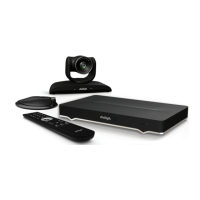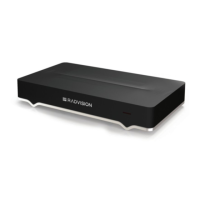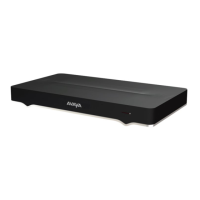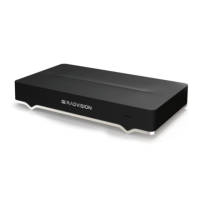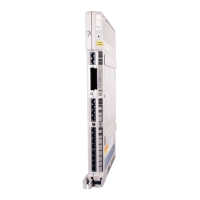6. Enter the field values as described in Table 21: Configuring the video layout on page 125.
Table 21: Configuring the video layout
Field Name Description
Multi Image Mode Enable PIP, PaP or PoP video layouts, depending on the number of video streams
available (see Figure 54: Single monitor video layouts with presentation on page 122).
• <auto > enables PiP, PaP or PoP only when the number of video streams is greater
than the number of available monitors. The order of the video streams is set
automatically, with precedence to the presentation video streams.
• On always enables PiP, PaP or PoP when at least two video streams are used.
When you are using two monitors, PIP can be forced only if there are at least three
different video streams.
• Off always disables PIP, PaP and PoP.
Multi Image Type Limit the video layouts available to users:
•
auto enables PIP, PaP and PoP layouts. Press the Layouts key on the simplified
remote control or the Pip key on the advanced remote control, to switch between
PIP, PaP and PoP.
• PIP enables only PiP.
• PaP enables only PaP.
• PoP enables only PoP.
If you are using a 4K UHD or 2160p (3840x2160) monitor, Multi Image is set to PaP,
by default.
PIP - Position Set the position of the small overlapped image on the monitor: upper left, upper right,
lower left, or lower right.
PIP - Rotation Enables/disables image rotation and controls the direction in which the image rotates.
End-users press the Layouts key to activate image rotation (if enabled).
• Fixed blocks image rotation (not available for Avaya XTE240).
• Clockwise rotates the overlapped image clockwise.
• Counterclockwise rotates the overlapped image anti-clockwise.
PIP - Size Select from Small or Medium sizes.
7. From the web interface only, select Save.
Related links
Manually setting up the XT Series on page 105
Configuring Monitors
August 2020 Deployment Guide for Avaya XT Series 125
Comments on this document? infodev@avaya.com

